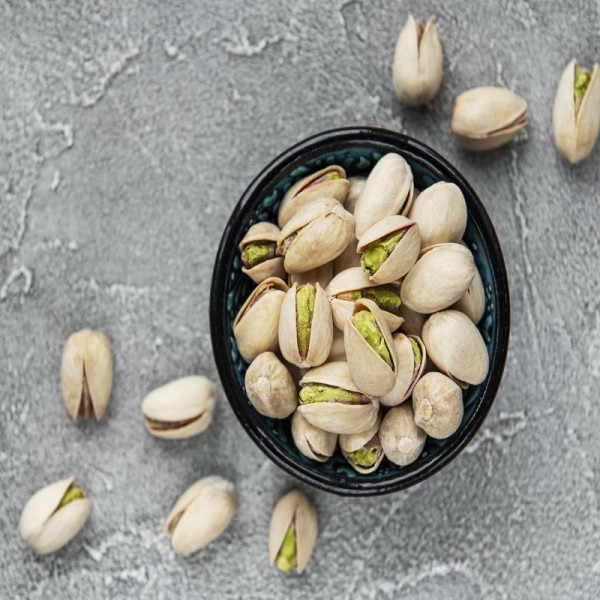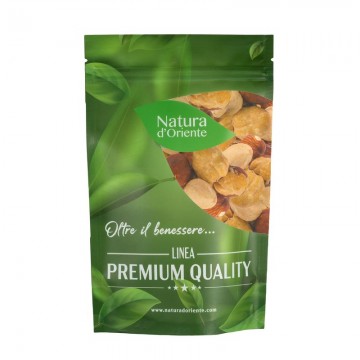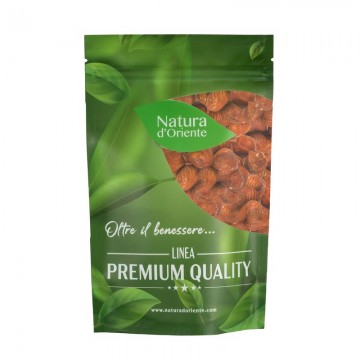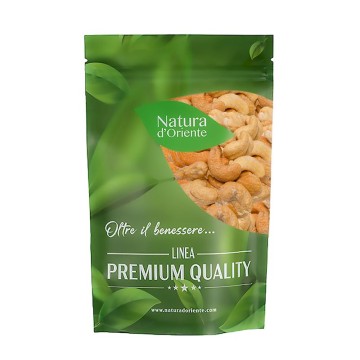There is scientific evidence according to which dried fruit in a diet low in saturated fat and cholesterol would help prevent the risk of heart attack.
Pistachios properties and benefits
Pistachios like all dried fruit are very nutritious, small quantities can provide an important percentage of the recommended daily allowance of numerous nutrients. Thirty grams of pistachios contain as much potassium as half of a large banana. Pistachios are among the richest sources of vitamin B6. The fats contained are 90% unsaturated fats, ie the so-called "good fats".
Origin and history of cultivation
The pistachio plant is native to Central Asia. In particular Iran and Afghanistan.
In fact, Iran is still the world's largest producer. Archaeological findings show that pistachios were common food as early as 6750 BC. The first traces of cultivation date back to the Bronze Age, again in Central Asia, evidence of it has been found in Uzbekistan.
It was naturally the Romans who brought pistachios to Europe, in particular Lucio Vitellius, the Elder, proconsul in Syria in the first century BC, he sent them to Italy, while at the same time were introduced in Spain, we learn it from the Natural History of Pliny the Elder. The spread to the rest of the world occurs mainly by the British in the English-speaking countries and the British Empire. Today, in addition to the aforementioned Iran, the largest world producers are the USA, in particular California, where pistachio was introduced in the mid-nineteenth century, initially as a garden plant, while cultivation began at the beginning of the last century.
The pistachio tree has a long life, even 300 years or more, begins to be productive at about 7-10 years and peaks at around twenty.
Plant and fruit
The pistachio is a relatively small tree, reaching about ten meters, of the Anacardiaceae family. It is a desert plant that tolerates saline soils.
The fruit is a drupe, that is, a fleshy fruit with a woody heart, but as is well known, the edible part is precisely the elongated seed found inside the fruit. When it reaches maturity, the fruit splits and drops the seed, a characteristic that has been selected by men over the centuries of cultivation. Pistachio, like many other fruit plants, has a two-year cycle, that is a year of greater production and one of rest, in particular as regards the pistachio it is not used to adopt stratagems to obtain production every year but is harvested every two years.
Nutritional properties of salted roasted pistachios
Since dried fruit is quite caloric, consumption should be moderate, however also in this case pistachios excel because they are less so than other dried fruit.
For example: 100 grams of pistachios contain 562 kilocalories against 654 for walnuts.
Consuming a moderate amount ensures the many nutritional benefits while keeping us safe from excess calories. About 30 grams of pistachios (40-45 shelled pieces, therefore not a few) guarantee 28% of the recommended daily ration of Vitamin B6 and 6% of that of potassium and provide 168 calories, a reasonable amount within the approximately 2000 daily intake. which are useful for those who lead a life that is not particularly active. Pistachios are also rich in antioxidants and in particular in lutein and zeaxanthin. They are not low in fat but are mostly (about 90%) unsaturated fats.
Dietary benefits of salted pistachios
Lutein and zeaxanthin have protective action on the eyes, so much so that they are commonly used in food supplements for sale with this indication. Paradoxically, despite being, as we have seen, a fairly caloric food, pistachios could also help in the diet because being rich in proteins and carbohydrates they easily give a sense of fullness. They are also friends of the heart by virtue of their unsaturated fat content and despite being high in carbohydrates they have a low glycemic index and therefore could help control blood sugar levels (diabetes).
Salted roasted pistachios in the kitchen: the recipe
There are many recipes that use pistachios, both in the sweet and savory fields. We chose a quick and easy dish.
Pasta with pistachio and prawn pesto
Ingredients:
- Pistachios (green shelled and without skin) 200 g
- Grana Padano PDO to be grated 35 g
- Lemon zest for grating ½
- Basil 50 g
- Garlic 1 clove
- Extra virgin olive oil 100 g
- Water 100 g
- Salt to taste
- Black pepper to taste
Preparation:
1) Boil the water for the pasta.
2) Preparation of the pistachio pesto:
a: peel the garlic clove and divide it in half, then remove the core
b: pour the pistachios and grated Grana Padano PDO into the glass of a mixer
c: add the oil, garlic and water
d: add the basil leaves and the grated lemon zest
e: salt, pepper and blend until a creamy and homogeneous consistency is obtained.
3) Clean the prawns by removing the head, the carapace and the inner edge after cutting the back with a knife.
4) Cut the bacon and pour it into a pre-heated pan (choose a large pan because then you will scald the prawns and drain the pasta). Brown the pancetta for a few minutes until golden and crisp
5) Set the bacon aside and keep the pan with the cooking juices.
6) With the water now boiling, pour the pasta and cook it for 3 minutes less than the time indicated on the wrapper.
7) In the same pan where the pancetta was browned, sear the prawns on one side only for a couple of minutes.
8) Deglass the bottom with a ladle of the pasta cooking water and turn off the heat.
9) Drain the pasta directly into the pan with the prawns and add another ladle of the cooking water and the bacon.
10) Combine the pistachio pesto, mix well and toss until the liquid has been absorbed. Finally season with a drizzle of raw oil.
![]()













 No reward points for this product.
No reward points for this product.















